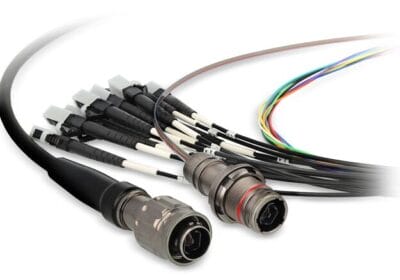By Jason Andersen, Vice President of Business Line Management, Stratus Technologies
The Industrial Internet of Things (IIoT) is revolutionising modern manufacturing capabilities. For years, smart organisations have benefited from analysing large amounts of data at every step of their supply chains. Armed with these powerful insights, companies are able to optimise production and increase efficiency. Edge computing, in particular, is experiencing a boom, as savvy manufacturers and industrial organisations dedicate on-premise computing resources to monitoring data and making critical production decisions in real-time. Investments are pouring into edge technology. Gartner, for example, predicts that 40 percent of enterprises will have a dedicated edge strategy by 2021, up drastically from only 1 percent who felt this way last year.
However, edge computing also presents a number of new logistical challenges. Fortunately, manufacturers are establishing a reliable blueprint for IIoT success: implementing self-protecting, always available computing systems.
Here’s a breakdown of some of the most important considerations for OT professionals implementing edge technology.
IT/OT Resource Limitations
Companies expanding their IIoT presence must also consider which teams should hold ownership and responsibility for edge systems. As IIoT and edge computing skyrocket in popularity, traditional IT is being deployed at the operational level. This makes it difficult to distinguish information technology (IT) and operational technology (OT). As the two fields converge, OT professionals are being tasked with supporting and installing IT infrastructure outside of their typical skillsets, and vice versa.
IIoT pioneers must find ways to connect the two functions, as it’s becoming more critical than ever to uncover combined IT/OT talent. Many companies are developing “hybrid OT” or “industrial IT” roles and hiring new employees. Others are investing in cross-functional training to expand current employee capabilities and encourage collaboration.
Either way, as companies begin to build a combined IT/OT perspective, limited on-premise IT staff and resources become a sizeable challenge. Adding to this difficulty, edge computing systems are typically located in remote areas that are difficult for staff to access. Under these considerations, self-protecting, continuously available systems are increasingly important, as they allow staff to focus on other projects. Investing in high-quality edge computing systems that OT teams can rely on creates a foundation for IIoT success.
Cybersecurity
Deploying OT security software upon edge technology is emerging as a cybersecurity best practice. In many cases, this provide an additional layer of security by locating threat detection resources on the edge of production networks, in close proximity to critical data.
Modern perceptions of cybersecurity threats tend to focus on data theft, but in reality, the downtime or decreased performance of essential tech infrastructure can impact entire supply chains. By dedicating infrastructure to on-premise data analysis, companies set themselves up to detect any potential anomalies in real-time. OT professionals can rely on insights from the edge to quickly analyse and respond to any anomalies in system performances that may come from malware attacks. Minimising the time required to respond to potential risks helps ensure key tech infrastructure performs at a high level.
Analysing security risks in real-time with edge computing solutions helps OT professionals keep their production cycles running smoothly and efficiently, protecting their production cycles from decreased infrastructure performance. OT teams operating edge technology should conduct regular cybersecurity audits to establish clear security baselines and protect themselves from risk.
Difficult environments and virtualisation
OT professionals implementing new edge products must navigate different automation environments, many of which present challenging layouts. Today’s factory floors, particularly those exploring IIoT automation, are problematic to navigate. Many are lined with separate networks for process control and plant management, in addition to hosting several unique servers dedicated to single applications. As manufacturing environments change, adding additional servers for each new application can result in a drain on computing resources.
Virtualising servers onto a single edge platform allows OT professionals to build a flexible foundation for IIoT success in these difficult environments. Centralising resources through virtualisation can reduce server sprawl and open new space at the edge of the network. Virtualisation onto a single server can also make systems easier to manage, repair, and scale, all at a lower cost.
Of course, organising multiple applications on one virtualised platform demands additional attention to server reliability. If a virtualised server shuts down or underperforms, so will the various production applications and functions it supports. OT professionals should take all necessary measures to ensure their virtualised servers are fault-tolerant and always available.
As rapidly improving IIoT and edge computing capabilities present new opportunities, they also present an array of new talent, infrastructure and security considerations. To ensure effective computing success at the edge, OT departments should prioritise highly secure edge computing systems with a hybrid OT staff.








